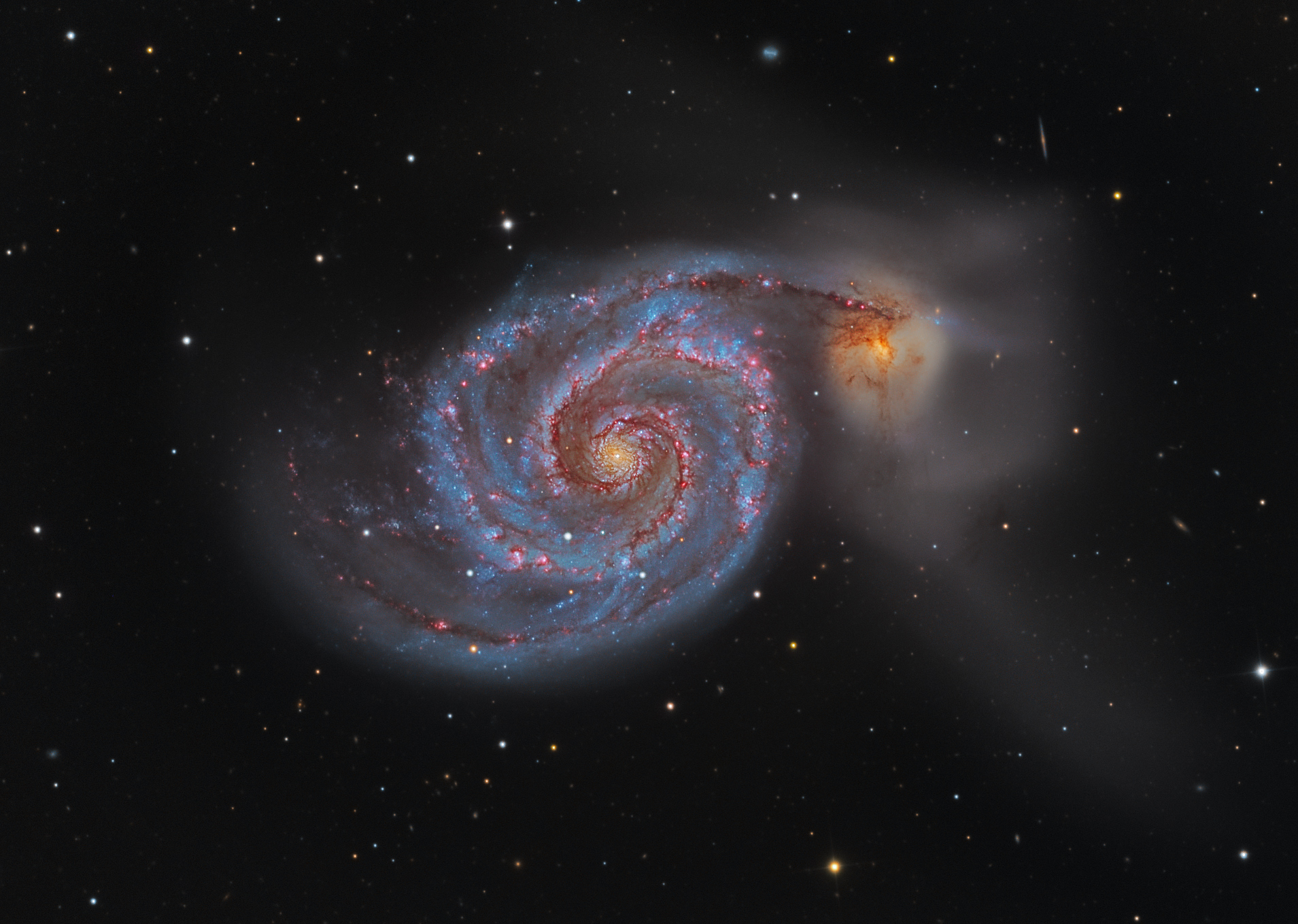
Posted on 10/26/2025 11:59:44 AM PDT by MtnClimber
Explanation: Follow the handle of the Big Dipper away from the dipper's bowl until you get to the handle's last bright star. Then, just slide your telescope a little south and west and you might find this stunning pair of interacting galaxies, the 51st entry in Charles Messier famous catalog. Perhaps the original spiral nebula, the large galaxy with well defined spiral structure is also cataloged as NGC 5194. Its spiral arms and dust lanes clearly sweep in front of its companion galaxy (right), NGC 5195. The pair are about 31 million light-years distant and officially lie within the angular boundaries of the small constellation Canes Venatici. Though M51 looks faint and fuzzy to the eye, deep images like this one can reveal striking colors and the faint tidal debris around the smaller galaxy
For more detail go to the link and click on the image for a high definition image. You can then move the magnifying glass cursor then click to zoom in and click again to zoom out. When zoomed in you can scan by moving the side bars on the bottom and right side of the image.

🪐 🌟 🌌 🍔
I wish the govt would reopen so NASA would lose that excuse to not release any info on ‘3I Atlas’, which has broken so many rules of comets that scientists seem frozen in shock or denial.
[The Whirlpool Galaxy]
For the record, I am opposed to naming
galaxies after laundry 🧺🧦🧦🧦 machines
Just show us pictures from the
Ford Galaxy 500
Yeh, I just informed myself about 3I Atlas this morning on YouTube. it does seem weird. Just what we need, more aliens. 😆

It’s a beautiful shot of M51, though….
If this photo was the Ford 500 Galaxy then it was just in a fender bender. Prepare for insurance rates to rise.
Noooooo!
Maybe someone in the fedgov sees that as a good reason to stay shudown, for whatever reason. We shall see.
An afternoon delight!
Google AI answer:
Its near-fixed position makes it an invaluable reference point for finding true north and determining latitude, especially in the Northern Hemisphere.
While it is not perfectly stationary—it makes a very small circle around the celestial pole—the movement is too small to be noticeable to the naked eye and is a tiny fraction of a degree.
Disclaimer: Opinions posted on Free Republic are those of the individual posters and do not necessarily represent the opinion of Free Republic or its management. All materials posted herein are protected by copyright law and the exemption for fair use of copyrighted works.